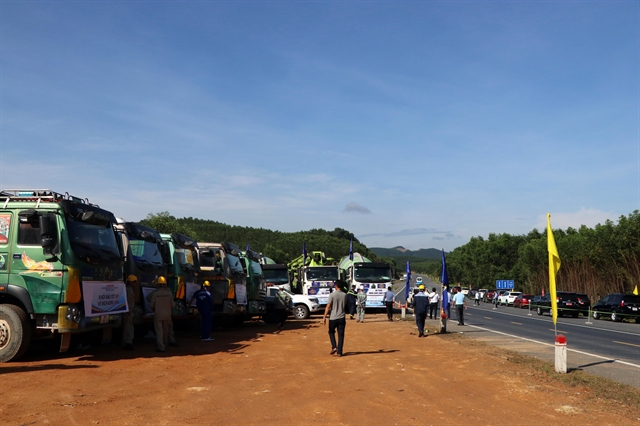A number of major construction firms have submitted proposals to invest in expanding sections of the North-South Expressway under a public-private partnership (PPP) model, expressing strong interest and a commitment to mobilise private capital without relying on state funds.

Machinery ready to begin construction on a section of the Eastern North-South Expressway expansion project. — VNA/VNS Photo
Deoca Group, Son Hai Group and the Vietnam Infrastructure Development and Finance Investment Corporation (VIDIFI) have all sent documents to the Prime Minister, requesting consideration as investors.
Deoca Group has proposed expanding 19 component projects along the expressway, with a total length of 1,241km. The firm said it would arrange financing independently from legal domestic sources and would not require funding from the state budget.
Son Hai Group also submitted a proposal to the government and the Ministry of Construction, seeking approval to invest in upgrading the expressway segment from Hoài Nhơn to Nha Trang.
The plan includes the sub-sections from Hoài Nhơn to Quy Nhơn, Quy Nhơn to Chí Thạnh, Chí Thạnh to Vân Phong, and Vân Phong to Nha Trang. The group's chairman Nguyễn Viết Hải said the company would fully finance the project with its capital and other sources.
Phuong Thanh Transport Construction and Investment recently proposed investing in over 200km of the expressway, including the Vũng Áng–Bùng–Vạn Ninh section (104km) and the Phan Thiết–Dầu Giây section (99km).
The company pledged to collaborate with contractors and investors and to cover all costs, and not to use state funds.
VIDIFI has proposed investing in a 300km stretch of the expressway from Ninh Bình to Quảng Bình. The firm and its consortium partners pledged to ensure progress and quality, arrange financing independently, and require no direct state support.
According to the Ministry of Construction, the Eastern North-South Expressway spans approximately 2,063km. As of now, 1,443km are operational, with around 597km under construction. By the end of 2025, 554km are expected to be completed
The Ministry has reviewed PPP options, including build-operate-transfer (BOT) contracts and a combination of BOT and operations & maintenance (O&M) models.
It concluded that BOT is a highly feasible approach and suggested dividing implementation into smaller projects, potentially one for the northern region and one for the south, to ensure consistency
While acknowledging challenges such as traffic volume forecasts and macroeconomic conditions, the Ministry warned that failure to attract private investment could delay projects or force inefficient state support.
For publicly funded segments, it proposed transitioning to PPP after toll collection begins, based on real-world conditions.